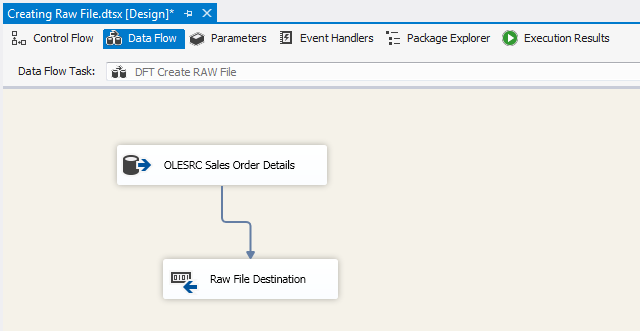Raw File Reader Ssis

You can ask a your question in another way, what is the difference between flat files and raw files in ssis A flat file is just any ordinary file with text in it: a.txt file, a.csv file and so on. You can read them using a text editor. The Raw File Source and Destination is a fast way of moving data between data flows, and can also be used when having to stage data to avoid slow writes to other locations. The use of raw files as SSIS data source is highly recommended for huge volume of data due to its superior read/write performance.
Raw File Source. 2 minutes to read.In this articleAPPLIES TO: SQL Server SSIS Integration Runtime in Azure Data Factory Azure Synapse Analytics (SQL DW)The Raw File source reads raw data from a file.
It offers many benefits including security, reliability, compatibility with other products, over-the-air updates in the cloud that don't require anything from the user, single sign on for access to everything right away, and so much more.Office 365 For Dummies offers a basic overview of cloud computing and goes on to cover Microsoft cloud solutions and the Office 365 product in a language you can understand. Utorrent. Office 365 For Dummies (3rd Ed))by Rosemarie Withee, Ken Withee & Jennifer ReedFor Dummies October 2018 ISBN-10: 320 Pages True PDF 26.5 mbEverything you need to get productive in the Cloud with Office 365With 70 million users worldwide, Microsoft Office 365 combines the familiar Office desktop suite with cloud-based versions of Microsoft’s next-generation communications and collaboration services.

Because the representation of the data is native to the source, the data requires no translation and almost no parsing. This means that the Raw File source can read data more quickly than other sources such as the Flat File and the OLE DB sources.The Raw File source is used to retrieve raw data that was previously written by the Raw File destination.
You can also point the Raw File source to an empty raw file that contains only the columns (metadata-only file). You use the Raw File destination to generate the metadata-only file without having to run the package.
Shipmate rs 8000 user manual. LGE wrote: The thing is that this GPS have been at the store for 2 years. I have a Trimblereceiver that keeps its memory (and almanac) for at least a yearon 'dead' external batteries. yes the gps have been powered upp for more than 12,5 min's:(( tnxThis, of course, depends on the receiver design. Do you know if there is an internal battery for the almanac???
For more information, see.The raw file format contains sort information. The Raw File Destination saves all the sort information including the comparison flags for string columns. The Raw File source reads and honors the sort information. You do have the option of configuring the Raw File Source to ignore the sort flags in the file, using the Advanced Editor. For more information about comparison flags, see.You configure the Raw File by specifying the name of the name of the file that the Raw File source reads.
NoteThis source does not use a connection manager.This source has one output. It does not support an error output. Configuration of the Raw File SourceYou can set properties through SSIS Designer or programmatically.The Advanced Editor dialog box reflects the properties that can be set programmatically.
For more information about the properties that you can set in the Advanced Editor dialog box or programmatically, click one of the following topics:.Related TasksFor information about how to set the properties of the component, see. Related Content. Blog entry, on sqlservercentral.comRaw File Source Editor (Connection Manager Page)The Raw File source reads raw data from a file. Because the representation of the data is native to the source, the data requires no translation and almost no parsing. Raw File Source Editor (Columns Page)The Raw File source reads raw data from a file.
Because the representation of the data is native to the source, the data requires no translation and almost no parsing. See AlsoRecommended Content.